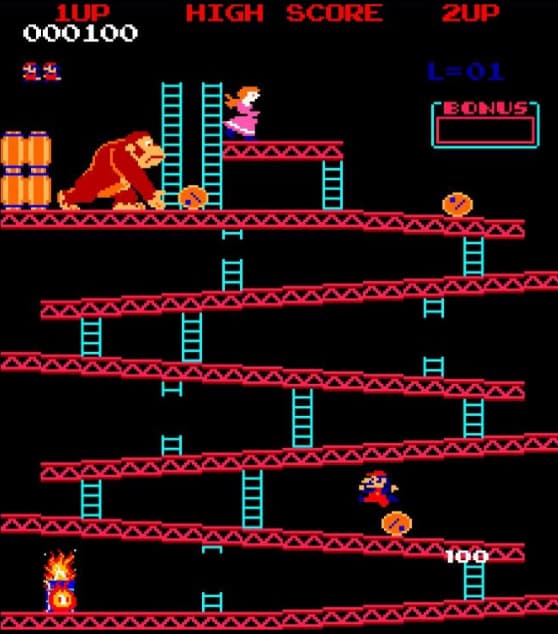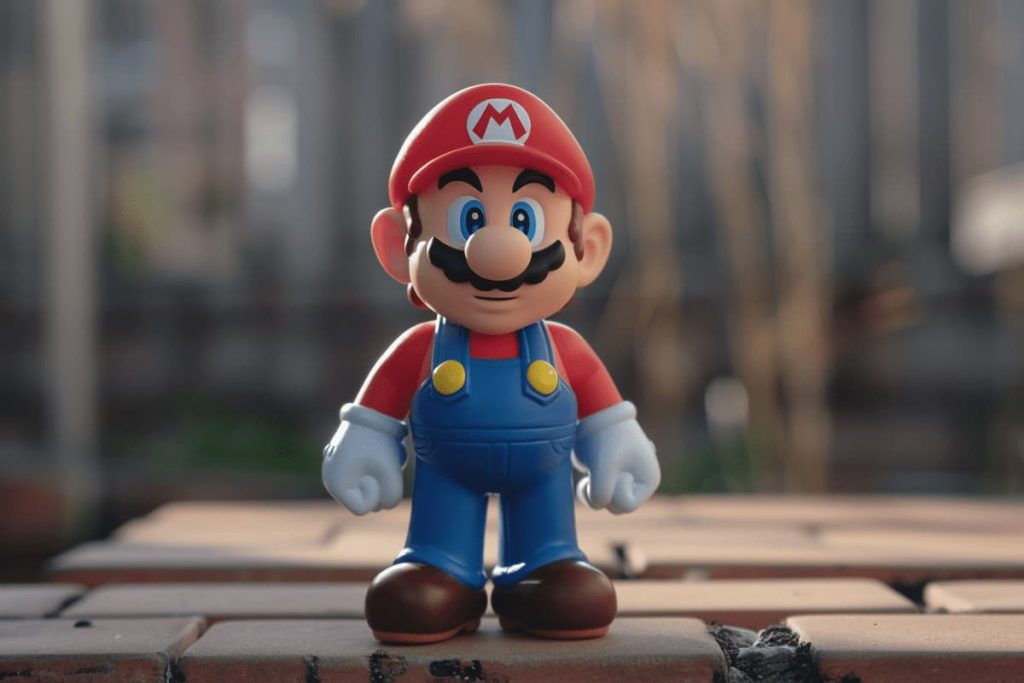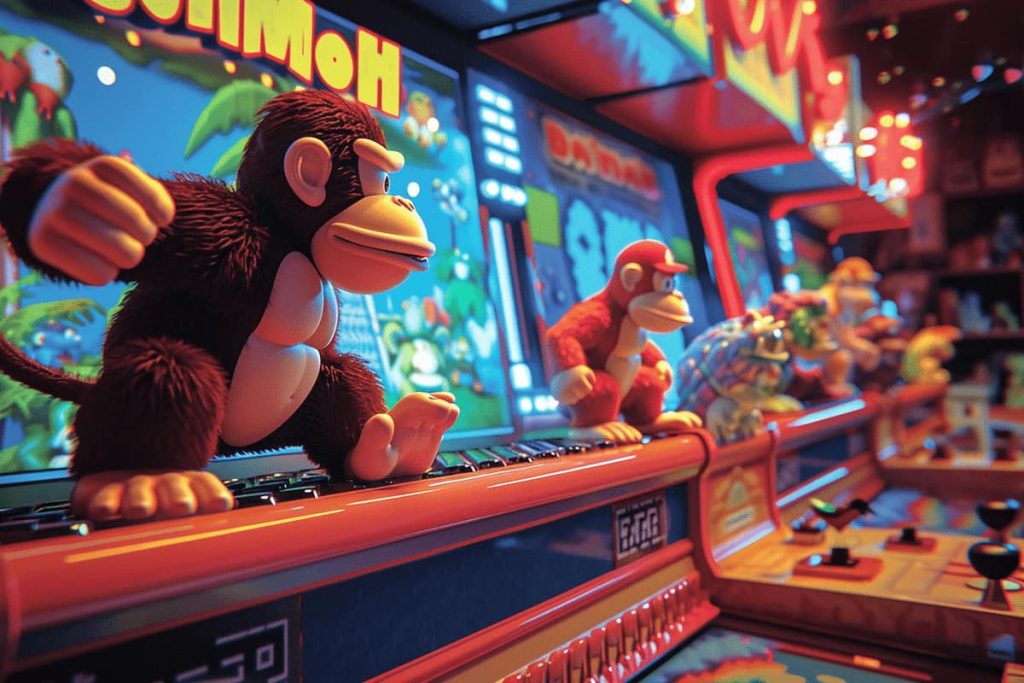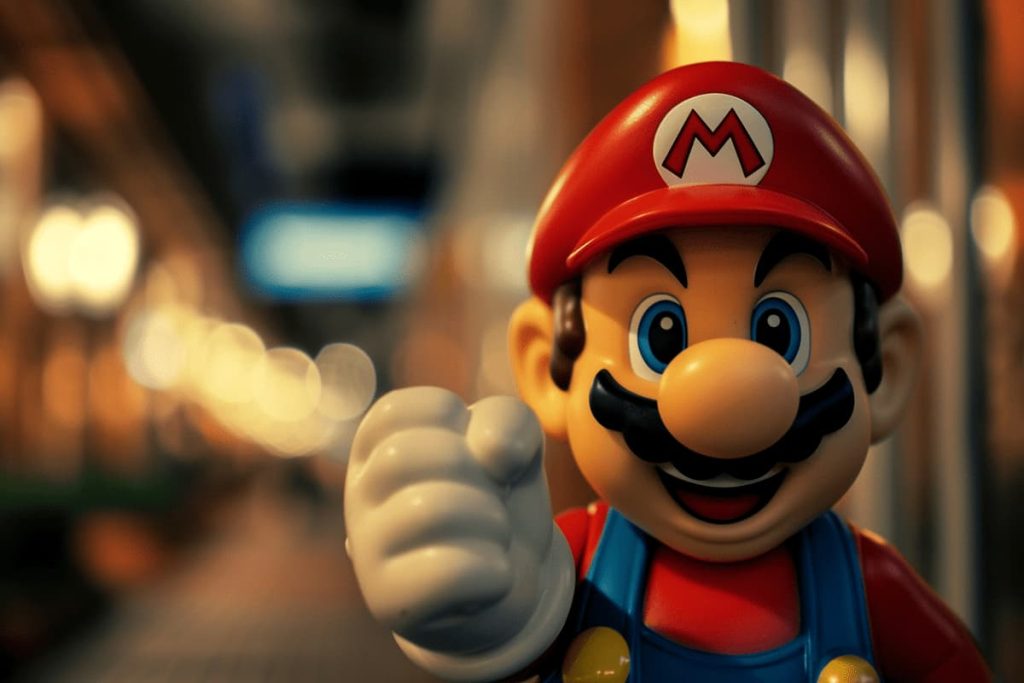On March 10th every year, gaming communities worldwide perk up to celebrate an icon who’s hopped through the gaming scene for over three decades. Mario Day, from the date’s resemblance to the name “Mario” when represented as “MAR10,” is a homage to the beloved plumber.
Mario has become not only the mascot of Nintendo but also a huge part of our childhood.
The Origins of Mario
The section “The Origins of Mario” dips into the transformation of a character from his creation to becoming a pop culture icon and the success of his debut game. This transformation is particularly evident as we look back from 1981 to 2023, reflecting on the evolution from the early days of Nintendo to the present.
From Jumpman to Mario

Nintendo’s pioneering game designer, Shigeru Miyamoto, conceived Mario as a playable character originally named Jumpman. It was a simple moniker that effectively described the character’s primary ability in the game he debuted in, especially as seen in Super Mario 3D World.
Mario, the plumber

Mario wasn’t a plumber by trade at the very start; in his first appearance, he was depicted as a carpenter. The character underwent a key evolution when he was eventually named Mario, a name chosen for its all-American flavor, and his profession was tweaked to being a plumber—a nod to his Italian heritage and the New York setting of later games, like in New Super Mario Bros. This evolution is celebrated every year on National Mario Day.
The Success of Donkey Kong

Indeed, every day is a Mario day in the gaming world, and 2024 was no different, with fans continuing to celebrate Mar10 Day and play Nintendo games with a Mario themed focus, like the enhanced 8 Deluxe versions.
Donkey Kong marked a significant milestone in the history of video games and for Nintendo of America. It wasn’t just the debut for Mario, who was then named Jumpman, but also the beginning of a franchise that would establish Nintendo as a major player in the gaming industry. This early success was a precursor to later hits like Mario Kart 8 Deluxe and LEGO® Super Mario™.
- Release Date: 1981
- Character Novelty: Introduced Mario (as Jumpman)
- Gameplay Innovation: Platform game with multiple stages
- Popularity Metrics: Paving the way for the platforming genre, it became one of the highest-grossing arcade games of its time.
Shigeru Miyamoto’s masterful creation set the stage for Mario’s further adventures, and the game’s widespread success solidified the character’s continuance in multiple subsequent Nintendo games, including recent ones like Super Mario Maker 2.
Donkey Kong’s critical and commercial success was the launchpad needed for Mario to star in his own series, which has since become a cornerstone of video gaming culture.
Rise of the Super Mario Bros.
The Super Mario Bros. franchise defined a generation of gaming, starting on the NES platform and introducing the iconic duo, Mario and Luigi, to the world. They began their journey in the distinctive, whimsical land known as the Mushroom Kingdom, setting the standard for platform games.
Every year on March 10, we celebrate Mario Day, honoring these beloved characters who started in the humble Nintendo store and expanded into a vast universe of games featuring Mario and friends.
Breaking New Ground with NES
In 1985, the gaming landscape was forever altered when Nintendo released Super Mario Bros. for the Nintendo Entertainment System (NES). This wasn’t the duo’s first appearance—that honor went to the arcade game Mario Bros. in 1983—but it was the breakthrough hit that earned them a permanent spot in pop culture.
With Shigeru Miyamoto at the helm, the game featured Mario and, for players who sought a two-player experience, his brother Luigi. They weren’t just characters; they became household names. The NES game introduced several enemies that would become series staples, including the Koopa Troopas and Goombas.
| Year | Milestone |
|---|---|
| 1983 | Mario Bros. arcade game introduced Mario and Luigi. |
| 1985 | Super Mario Bros. released on the NES. |
Creating the Mushroom Kingdom
The Mushroom Kingdom was the vibrant backdrop against which players guided Mario through a variety of levels filled with bricks to smash, power-ups to grab, and pipes to explore. This fictional world was teeming with enemies like the Koopa Troopas and Goombas, and every level brought players closer to the ultimate showdown with the nefarious Bowser.
What made the Mushroom Kingdom memorable was not just its color and creativity but also its complexity—the secret warp pipes and hidden blocks urged players to explore every corner of Mario and Luigi’s world.
On special days like Mario Day on March 10, fans celebrate by dressing up as Mario, engaging in Mario Kart Live races, and even building LEGO Super Mario sets.
Nintendo also offers the choice of a free Mario full game download at the Nintendo store and select retailers to mark this special day.
- Play Elements: Exploring levels, collecting coins, and defeating enemies.
- Iconic Characters: Mario, Luigi, Bowser, Koopas, Goombas.
- Secrets: Hidden pipes and invisible blocks that offered shortcuts and bonuses.
Mario’s Evolution Over Time
Over the decades, the Mario character has leaped from pixelated 2D side-scroller to 3D world explorer, largely due to technological advancements and the Mario series of games, which have left an indelible mark on Nintendo’s video game culture.
Advancements in Gaming Technology
When Mario and his brother Luigi first appeared in arcade games in the early 80s, the technology was relatively simple, relying on basic graphics and limited sound capabilities. However, when Nintendo launched the Nintendo Entertainment System (NES), it brought more sophisticated Nintendo video games into living rooms.
The transition from the NES to the Super Nintendo Entertainment System (SNES) and later systems such as the Game Boy, Nintendo 64, and Nintendo Switch showcased Nintendo’s dedication to evolving gaming technology.
This progression allowed for better graphics, more complex gameplay, and expansive worlds.
For instance, playing Super Mario 64 introduced gamers to a fully-rendered 3D environment, offering freedom of movement in all directions for the first time, which people of all ages enjoyed.
- NES to SNES: Introduction of 16-bit graphics, allowing more detailed sprites and backgrounds.
- Nintendo 64: Debuted 3D gameplay with Super Mario 64 and a horrible analog stick that would grind away over time.
- Nintendo Switch: They brought together their handheld and home console division. Gave the ability for both home and portable play.
Iconic Super Mario Titles
Each Nintendo console generation brought its standout Super Mario titles, which have become a significant part of the video game series. There are so many; almost every Mario game is fantastic. There are no bad ones, just Mario games that are better than others.
- Super Mario Bros.: The original NES game set the standard for platformers and is a game that people of all ages love.
- Super Mario Bros. 3: Released on the NES, it introduced a map screen, unique power-ups, and mini-games. This is also the best Super Mario Bros game.
- Super Mario World: This SNES classic introduced Yoshi and a ton of secret levels.
- Super Mario 64: Debuted on the Nintendo 64, offering an open-world experience and significant leaps in 3D graphics.
- Super Mario 3D World: One of the best games on the WiiU and the most underrated Mario title.
- Super Mario Odyssey: The Nintendo Switch game combines sandbox-style exploration of Super Mario 64 with modern graphics and gameplay mechanics.
Celebrating Mario Day
What is MAR10 Day?
Mario Day, celebrated on March 10th, transforms the date into a pun that reads as “MAR10”, closely resembling the name Mario.
MAR10 Day isn’t just a fan phenomenon anymore; it’s an event officially recognized by Nintendo since 2016, encapsulating the spirit and longevity of the Mario series.
Fans flock to social media platforms like Twitter and Facebook using the hashtag #MarioDay to share their admiration and experiences of playing Mario.
How Fans Celebrate Worldwide
Globally, Mario enthusiasts mark March 10th with a mix of public and private events. Eager fans celebrate by:
- Sharing posts on Twitter and Facebook
- Wearing Mario-themed apparel
- Participating in Mario game tournaments
Retailers like Amazon often jump on the bandwagon, offering special deals on select Nintendo Switch games, sometimes slashing prices by up to 35% off. The day encourages fans to revel in a blend of nostalgia and contemporary gaming triumphs, ensuring both new and old versions of Mario games are cherished and enjoyed.
Particularly, the holiday is celebrated annually with various promotions, such as a bundle that is available featuring Mario Party Superstars and other titles.
Expanding Mario’s Universe
Mario has darted beyond the confines of the Mushroom Kingdom, embracing the world of spinoffs and crossovers, and fostering a vibrant multiplayer community that continues to thrive today, just as the Mario Day timeline reflects.
Introduction to Spinoffs and Crossovers
There’s a ton of different game types Mario has brought us.
Super Mario Kart: A series kicked off a new genre of family-friendly racing games, notably on Mario Day dates, while Super Smash Bros. established a crossover arena where Mario and peers from various Nintendo franchises battle it out.
Mario Party: It has capitalized on the party game trend, introducing board game-like elements combined with minigames.
Multiplayer and Community
Multiplayer dynamics are central to the enduring popularity of Mario games. Super Mario Kart, for instance, not only pioneered the racing game genre on consoles but also introduced competitive and cooperative play that became a staple in gaming communities, especially at the Mario Circuit.
Transitioning to mobile platforms, Mario Kart Tour brought the racing experience to a wider audience, emphasizing community and inclusivity.
This was further cemented when Nintendo officially embraced the holiday, allowing players to celebrate with various games on a day dedicated to Mario.
Furthermore, the introduction of the Mario Costume in various titles, like Super Smash Bros., allows players to embody their favorite plumber, enhancing personal connection and immersion within the community.
Cultural Impact and Legacy

Influence on Pop Culture
Super Mario, an iconic character from the eponymous video game franchise, has made an indelible mark on entertainment. He doesn’t just live within the confines of the gaming world; his red hat and mustache are recognized across multiple media.
His adventures, originally crafted for the Super Nintendo, have spilled over into cartoons, movies, and even theme parks.
The influence is so profound that Super Nintendo World, built inside Universal Studios, allows fans to physically step into the Mushroom Kingdom, bridging the gap between virtual and tangible experiences.
Notable Contributions to Pop Culture:
- Movies and cartoon adaptations
- Extensive merchandise and apparel lines
- Super Nintendo World at Universal Studios
Super Mario’s Global Reach
Boasting a reach that spans the globe, Super Mario has paved the way for other iconic franchises like:
- Super Smash Bros.
- Mario Kart.
The games not only provide entertainment but also foster a sense of universal connection among players from different backgrounds. Just as Mario leaps across platforms, his influence jumps across borders, connecting people around the globe through the shared language of gaming.
Key Factors to Super Mario’s Global Success:
- Recognizable characters that resonate with audiences worldwide.
- Constant innovation and the introduction of new gaming experiences.
- Collaboration with various entertainment sectors to broaden appeal.
Screen Time and Gaming Balance
Striking the right balance between gaming and other activities ensures that players enjoy their favorite titles without letting screen time interfere with their overall well-being.
Healthy Gaming Habits
Establishing a set of guidelines can help gamers maintain a healthy relationship with their digital entertainment.
Setting time limits for play and taking regular breaks can prevent extended sessions that may contribute to a sedentary lifestyle. It’s also useful for a gamer to diversify their interests, ensuring that video games are just one aspect of their entertainment repertoire.
- Schedule Gaming: Dedicate specific hours for gaming that don’t conflict with responsibilities.
- Regular Breaks: Follow the 20-20-20 rule; every 20 minutes, look at something 20 feet away for at least 20 seconds.
- Active Play: Choose games that encourage movement or use gaming as a reward after physical activity.
Screen Time Recommendations
The importance of adhering to screen time recommendations cannot be understated. Kids, teenagers, and adults need to monitor the amount of time they spend in front of screens for their overall health.
Below are general guidelines based on age:
| Age GroupRecommended Screen Time | |
|---|---|
| 2-5 years | 1 hour per day |
| 6-18 years | 2 hours max of recreational screen time |
| Adults | Balance with other activities |
Adults should tailor their screen time around work obligations and other daily tasks, making room for face-to-face interactions and physical activity. Remember, these are not strict limits but starting points for a balanced digital and real-world life.
Looking Ahead
Future of Gaming
As gamers gaze into the future, excitement for new developments in video game franchises grows. Technological progress offers the potential for more engaging virtual worlds, immersive gameplay, and novel ways of interaction.
This drive for a stronger bond between player and game keeps Super Mario games and similar ones at the cutting edge of innovation.
Emerging technologies like AI and VR might revolutionize future gaming consoles. These advances could lead to more tailored game experiences, adjustable challenges, and creative storytelling methods, making every playthrough distinct and personalized.
Mario’s Ongoing Journey
Mario, an iconic character beloved for decades, continues his journey in the gaming universe. Nintendo has carefully nurtured the Super Mario franchise, routinely releasing titles that appeal to both nostalgia and contemporary gaming appetites. Mario’s world is constantly expanding, keeping fans on their toes with each new quest.
The durability of the Super Mario franchise relies on this cycle of reverence and reinvention:
- Respect for Legacy: Maintaining the charm that has defined Mario games since the 1980s.
- Embrace of New Trends: Incorporating modern gaming elements to stay relevant.
- Community Engagement: Celebrating events like “Mario Day” to keep the fandom engaged.
Nintendo’s commitment to its community and its willingness to explore uncharted territories in gaming ensure Mario’s Odyssey will continue captivating audiences, one power-up at a time.
Celebrating the 35th Anniversary
In 2020, fans of the plumbers in red and green caps witnessed a milestone as Nintendo Co. celebrated the 35th Anniversary of its iconic Super Mario franchise. Nintendo announced a special Super Mario Bros. 35th Anniversary Direct on September 3, 2020, sparking excitement and nostalgia among the gaming community.
To commemorate this event, various in-game events and merchandise releases took place. Notable among them were My Nintendo rewards and the launch of several new games. It was a feast for Mario fans, as the legendary game series created by Shigeru Miyamoto showed them numerous opportunities to revisit the Mushroom Kingdom.
Here are a few highlights from the anniversary:
- New Game Releases: Fans were treated to fresh adventures including a battle royale-style game, Super Mario Bros. 35, where 35 players could compete against each other simultaneously. Although, this was a little run as it can’t be accessed anymore.
- Merchandise and Tie-ins: A variety of collectibles and Mario-themed products flew off the shelves as enthusiasts celebrated the Year of Mario.
- In-Game Events: Special events in existing Mario games were held, giving players new content and challenges to enjoy.
The official festivities came to a close on March 31, 2021. But, every year, the spirit of the anniversary is somewhat revived on Mario Day (celebrated on March 10th), as fans and Nintendo alike remember the joy the Super Mario series has brought to gamers around the world.
Connecting with the Community
Mario Day is celebrated annually on March 10. It has become a key event for fans globally to connect over their love for the iconic Nintendo character.
On this day, the hashtag #MAR10Day brings Twitter to life. Fans, influencers, and Nintendo Co itself share fun images, fond memories, and announcements about Mario.
Moderated forums on Facebook and other social platforms are also active. They provide a space where enthusiasts can discuss game strategies and share favorite Mario moments. These communities often organize virtual meetups and gaming sessions. This strengthens the bond between players.
Celebration Methods
- Social Media Sharing: Fans use platforms like Twitter and Facebook to exchange stories and creations.
- Nintendo Engagements: Nintendo posts interactive content, engaging directly with their community.
The camaraderie experienced on Mario Day shows Nintendo’s success in creating a sense of belonging among its audience. On this day, fans not only celebrate Nintendo’s history but also recognize the role they play in the franchise’s popularity. Nintendo celebrates this day with their fans. This reflects their dedicated effort to maintain a strong connection with their community.
Character Spotlights and Easter Eggs
In the vibrant world of Super Mario Bros., the environment is alive with well-loved characters. Here are some of the power-ups, and game design elements.
| Category | Characters/Elements | Description |
|---|---|---|
| Central Characters | Mario and Luigi | Distinct abilities; Luigi known for high jumps and green outfit. |
| Princess Peach | Often captured by Bowser, the Koopa King. | |
| Supporting Characters | Toad | Peach’s helpful and positive companion. |
| Yoshi | A friendly dinosaur who helps players by eating enemies. | |
| Boos | Timid ghosts that freeze when looked at. | |
| Goombas and Piranha Plants | Common enemies, with Piranha Plants emerging from pipes. | |
| Power-ups and Items | Super Mushroom | Enlarges the characters. |
| Starman | Provides temporary invincibility. | |
| Additional Characters | Wario | Mario’s greedy antagonist. |
| Princess Daisy and the Koopa army | Add depth and variety to the Mushroom Kingdom. | |
| Easter Eggs and Design | Hidden references and nods to past adventures/Nintendo | Subtle hints in level design and secret rooms that bring joy and nostalgia to players. |
Frequently Asked Questions
What’s the backstory of Mario Day, and why do we celebrate it?
Mario Day is marked on March 10th, as the date resembles Mario’s name (MAR10). It’s a playful holiday celebrating Nintendo’s iconic character, Mario, who first appeared in the 1981 game “Donkey Kong.”
What are some tips for managing gaming time for kids?
Establishing routines helps manage children’s screen time by setting aside specific times for gaming. It’s helpful to create a balance between gaming and other activities. Therefore, reinforcing the importance of breaks is crucial during extended periods of gameplay.
What might be a healthy amount of gaming time for a teenager
The amount of healthy gaming time can vary. It is advisable to keep gaming limited to one to two hours daily. It’s important to ensure that gaming does not negatively impact physical activity and other responsibilities.
How has the Mario franchise impacted the gaming industry over the years?
The Mario franchise has been pivotal in shaping the gaming industry. It introduced innovative gameplay, iconic characters, and setting standards for platform games. It’s helped solidify Nintendo as a major player in the industry.
In celebrating Mario Day, how can we find a good balance between screen time and other activities?
To celebrate Mario Day while maintaining a screen time balance, one can combine gaming with Mario-themed activities such as drawing, cosplay, or even baking, to engage in the celebration beyond the screen.
Are there any differences in celebrating Mario Day on various gaming consoles like Xbox or Switch?
Celebrating Mario Day primarily takes place on Nintendo consoles like the Switch, as Mario is a Nintendo-exclusive character. Other consoles may honor the day with digital sales or themed events, but gameplay is Nintendo-centric.
wrapping up – KEEP A HEALTHY PLAY BALANCE AT ANY GAMING WORLD
Mario Day, celebrated annually on March 10th, is more than just a homage to a beloved video game character; it’s a celebration of the evolution of gaming technology and the cultural impact of Nintendo’s iconic mascot. This day serves as a reminder of the importance of balancing our passion for gaming with healthy screen time habits.
As we honor the journey of Mario, we also look forward to the future of gaming, where technological advancements promise to keep this beloved character at the forefront of entertainment and innovation. Mario Day thus symbolizes the joy, creativity, and community spirit that define the gaming world.






